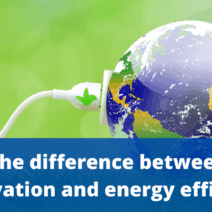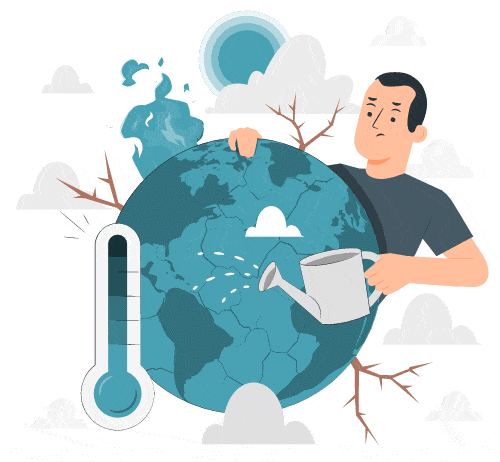Climate change, a profound consequence of anthropogenic activities, has united advocates and scientists in a clarion call for action. At the forefront of this battle is the concept of the carbon footprint, an intricate measure of the total greenhouse gas emissions generated directly or indirectly by individual actions. A decisive contributor to these emissions is energy consumption, making the reduction of energy use imperative not only for personal sustainability but also for the collective preservation of ecosystems.
To understand the gravity of our energy consumption, one must first appreciate how various forms of energy production affect the environment. Conventional electricity generation heavily relies on fossil fuels—coal, natural gas, and oil—which release copious amounts of carbon dioxide (CO2) into the atmosphere. These actions exacerbate the greenhouse effect, leading to global warming. Transitioning to renewable energy sources, like wind, solar, or hydroelectric power, is a pivotal means to not just reduce one’s carbon footprint, but to engender meaningful progress against climate change.
Reducing energy consumption manifests in numerous everyday actions that can collectively have a significant impact. One effective methodology is practicing energy efficiency at home. This entails using appliances that consume less energy, such as Energy Star-rated devices, LED lighting, and smart thermostats. Simple changes, like turning off lights when leaving a room or unplugging devices that are not in use, foster an environment of conscientiousness about energy use.
In addition to home energy efficiency, the transportation sector also presents an opportunity to mitigate carbon emissions. Personal vehicle use is a substantial contributor to an individual’s carbon footprint. Transitioning to public transportation, biking, or walking not only reduces energy use but also promotes healthier lifestyles. Moreover, if driving is necessary, opting for fuel-efficient or electric vehicles can diminish reliance on fossil fuels and lower greenhouse gas emissions considerably.
Moreover, embracing a plant-based diet can yield a surprising reduction in one’s carbon footprint. The livestock industry is a notorious contributor to greenhouse gas emissions, with methane produced by cattle being particularly detrimental. By reducing meat consumption, particularly red meat, individuals can contribute to decreased energy use in food production while also promoting animal welfare and conservation of natural resources.
Another pivotal arena in the quest to decrease energy consumption is the textile and fashion industry. The production of clothing consumes immense amounts of water and energy and generates significant waste. By opting for sustainable fashion choices—such as buying secondhand clothes, supporting ethical brands, or adopting a minimalist wardrobe—consumers can drastically reduce their carbon footprint. Practices like clothing swaps and upcycling further enhance sustainability by extending the lifecycle of garments.
Education and advocacy are also key elements in the campaign to reduce energy use. Individuals knowledgeable about climate change can spur change within their communities, illuminating the path toward sustainability. Hosting workshops, participating in local activism, or even sharing information through social media are ways to amplify awareness regarding energy efficiency and ecological responsibilities. By fostering a culture of climate consciousness, communities can create systemic change that resonates beyond personal actions.
Furthermore, incorporating renewable energy into individual lifestyles not only mitigates reliance on fossil fuels but also catalyzes the transition toward broader societal change. For example, installing solar panels or subscribing to community solar programs empowers individuals to harness and utilize renewable energy. This transition can alleviate pressure on electrical grids and diminish fossil fuel dependency, further contributing to a sustainable future.
The aggregate impact of individual choices becomes evident at a larger scale. As more individuals reduce their energy consumption, the cumulative effects generate substantial demand for sustainable practices. This, in turn, encourages businesses and policymakers to prioritize renewable energy investments and enhance infrastructure for sustainability.
In addressing global warming, it is vital to recognize the interconnectedness of our choices. The multifaceted approach to reducing energy use incorporates behavioral shifts, policy advocacy, and technological innovations. Each act, no matter how minor, contributes to a broader narrative of ecological stewardship.
The pursuit of reducing our carbon footprints is not merely about individual actions; it is about fostering a collective ethos that prioritizes the health of our environment. By engaging in energy efficiency, sustainable transportation, mindful consumption, and advocacy, individuals can participate actively in the solution to climate change. Every small endeavor, every conscious decision, can result in a significant ripple effect. Together, these efforts form a collective movement toward a more sustainable future.
Ultimately, the power of reducing energy use cannot be overstated. It holds the potential to redefine our ecological footprint and assert a commitment to combatting the imminent threats posed by climate change. As citizens of a global community, it is incumbent upon us to act decisively and with resolve, ensuring that future generations inherit a planet that is not only habitable but thriving.







